Nikita Dmitriev, assistant curator of the Musée d’Art Moderne in Paris, reflects on the latest exhibition by the French Turner Prize-winning artist, Laure Prouvost
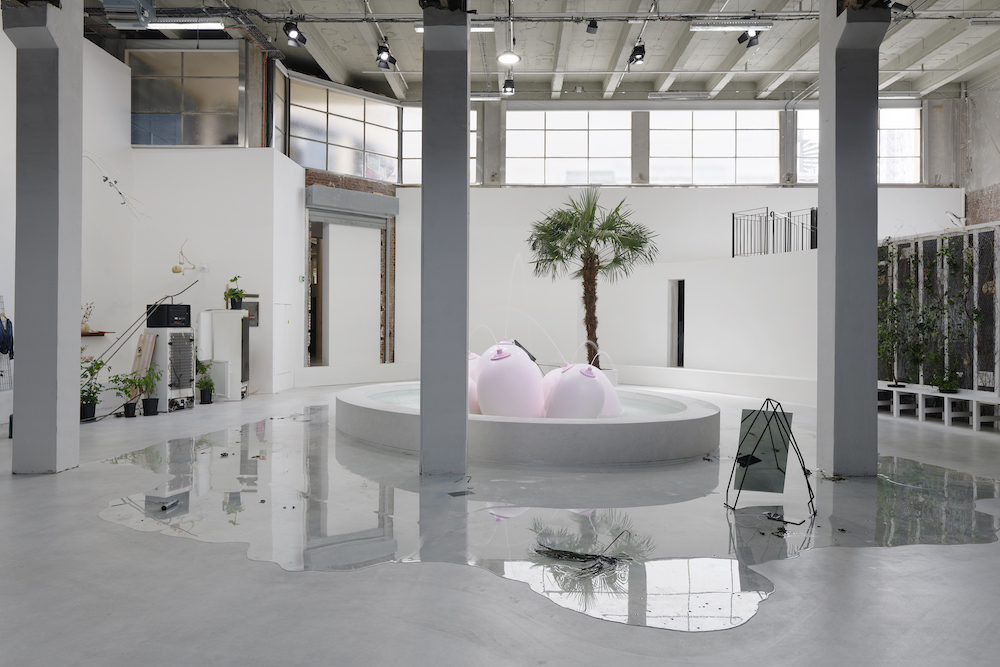
(22.06.2018 – 09.09.2018) Courtesy of the artist and Nathalie Obadia (Paris / Brussels), carlier | gebauer (Berlin), Lisson Gallery (London / New York) Photo: Aurélien Mole
Folly; maniacal delirium – these words best describe the atmosphere of Laure Prouvost’s videos, where orgiastic and surreal scenes follow one another at a frantic pace: the sound of flesh on flesh and infernal murmuring, sweaty ground and bloody callouses exploding. Historically, Prouvost is part of a long tradition of intellectuals and creators who build on hallucinations – Deleuze and Guattari’s Anti-Oedipus, Ezra Pound’s Cantos, Burroughs’s Naked Lunch, Gaspar Noé’s Sodomites, Antichrist by Lars von Trier, without going back to the Homeric Hymns or the writings of St. Teresa of Avila – but it is with Hieronymus Bosch that Prouvost has the deepest connection.
Bosh and Prouvost are successful outsiders, working separately to the dominant aesthetic of their time, and at the same time they have been accepted and celebrated. Bosch’s pieces found their place in the princely castles and cathedrals of Flanders; those of Prouvost are exhibited at the Tate Modern, Palais de Tokyo and, soon, at the Venice Biennial.
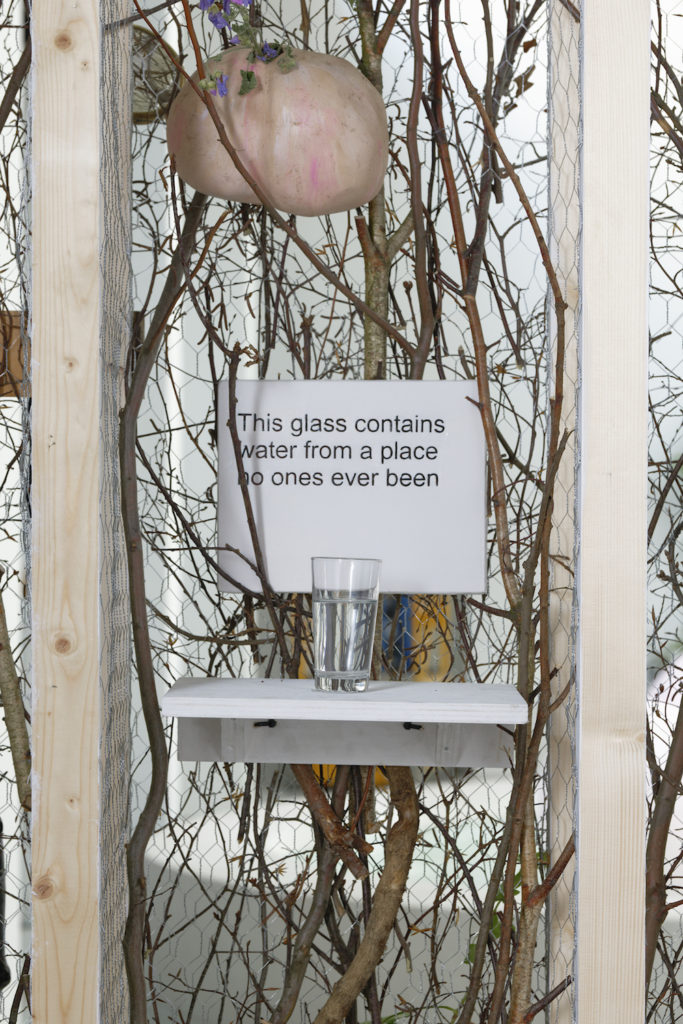
(22.06.2018 – 09.09.2018) Courtesy of the artist and Nathalie Obadia (Paris / Brussels), carlier | gebauer (Berlin), Lisson Gallery (London / New York) Photo: Aurélien Mole
The artists share many motifs: labyrinths, insects and arthropods, animals outside of their natural environment, breastfeeding, castration, copulation. And, it is not only the imagery or the institutional position, but also the intuitive worldview, the “apocalyptic glamor of the condensed life”, as Prouvost herself defines it, which parallels her with Bosch. Nature – as a titanic unified mass of mineral and biological entities oppressing people – is the main common theme. It is a nature that is animated, cruel and libidinous; it is destructive, with a violent eroticism, pleasure and suffering going hand-in-hand; nature in heat, a beast with a thousand faces and a thousand feet, flowing with blood, milk and sperm; Medusa, seducing, dementing and assassinating.
With all the might and immediacy provided to the artist by the contemporary technologies, Prouvost awakens the most chthonic phobias of human consciousness, immersing her audience in a Greek tragedy, the horror of life in the world under the domination of dark and inhuman destiny, the horror of one who is subject to the forces of chaos, without hope of ever escaping. For Prouvost, and Bosch in his Garden of Earthly Delights, hell is here on Earth, and not below.
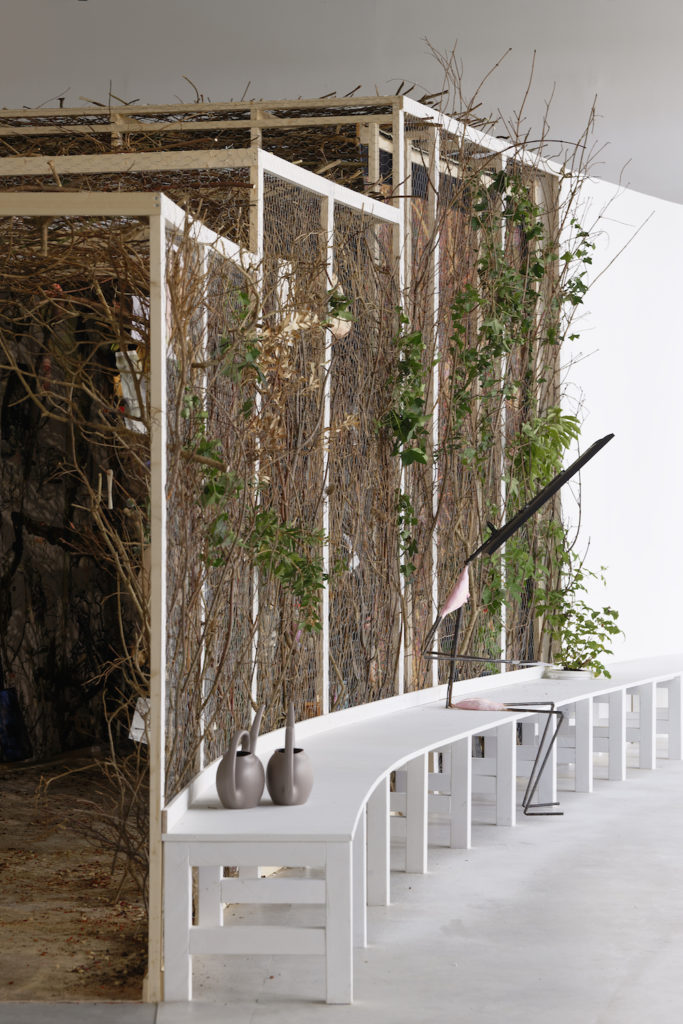
(22.06.2018 – 09.09.2018) Courtesy of the artist and Nathalie Obadia (Paris / Brussels), carlier | gebauer (Berlin), Lisson Gallery (London / New York) Photo: Aurélien Mole
The artistic effect of Prouvost’s videos, such as It, Heat, Hit (2010), We Will Go Far (2015), Lick in the Past (2016), and especially Swallow (2013), eliminates the border between the imaginary and the real; instinctive and dynamic – they exceed art itself, leading us to the metaphysical elsewhere. All this is made even more disturbing in her latest Parisian solo shows, Looking At You Looking At Us at Nathalie Obadia Gallery (2017) and Ring, Sing and Drink for Trespassing, currently at the Palais de Tokyo, where the video – the medium in which she excels the most – does not play the major role.
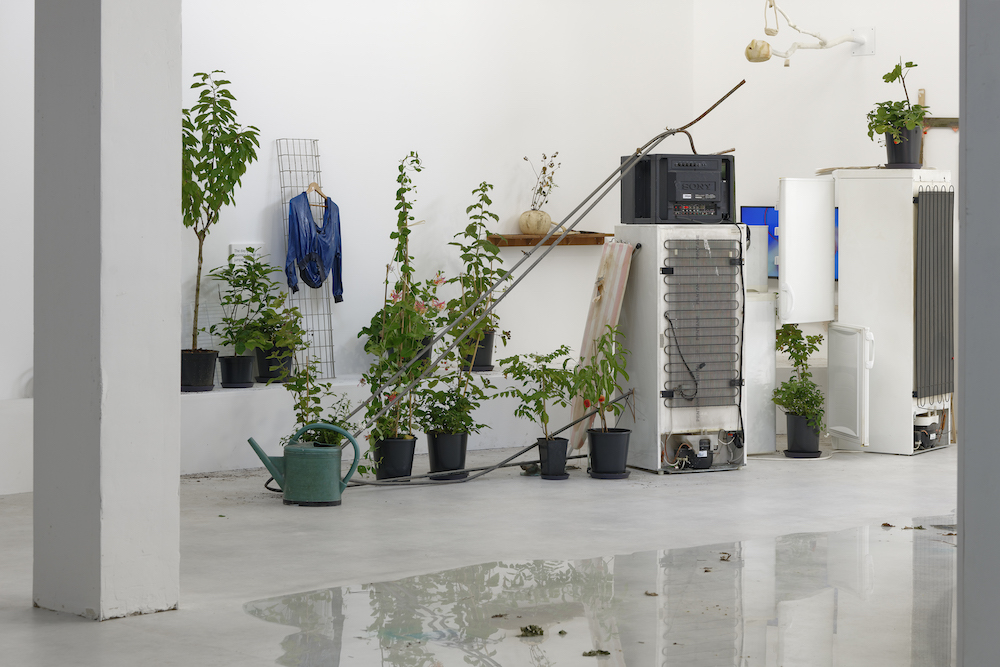
(22.06.2018 – 09.09.2018) Courtesy of the artist and Nathalie Obadia (Paris / Brussels), carlier | gebauer (Berlin), Lisson Gallery (London / New York) Photo: Aurélien Mole
Prouvost’s Obadiah Gallery show consisted of a series of nudes, some older short films, vases with cacti, and stick figures made from iron rod who hold screens that flash incantations and wander from one work to another. At the Palais, it’s a massive arte povera installation – a labyrinth divided into several sections with a fountain in the shape of several massive female breasts. Sculptures, already exhibited at Obadiah Gallery, and most of Prouvost’s longtime totems – twigs, raspberries, vegetables, buttocks and nipples – constitute the rest of the show. As for the fountain, it doesn’t have enough visual presence to articulate such a vast space – the strong, direct lighting kills the mystical, shadowy ambience so peculiar to Prouvost, and no new video, capable of redeeming these weaknesses, has been created on this occasion.
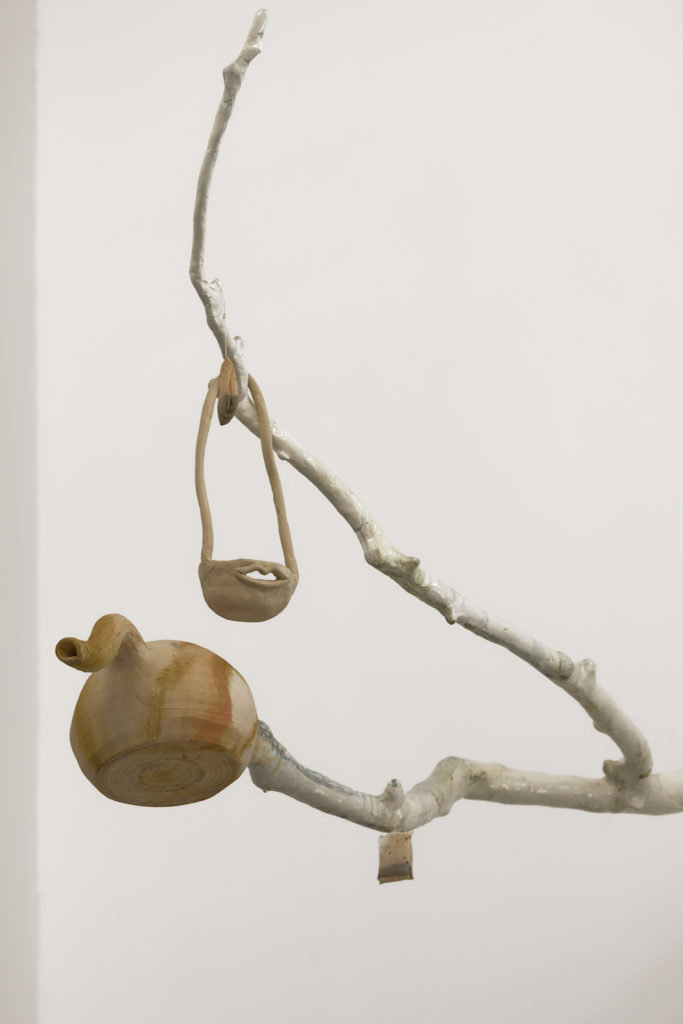
(22.06.2018 – 09.09.2018) Courtesy of the artist and Nathalie Obadia (Paris / Brussels), carlier | gebauer (Berlin), Lisson Gallery (London / New York) Photo: Aurélien Mole
For the first time in her career, Prouvost even seems to bow to political conjuncture: beside a wet jacket she writes, mockingly perhaps, that global warming has caused it to become damp. The show’s entrance corridor, dominated by dry branches, iron sticks and ceramic pots, is very similar to the work of the ultra-fashionable Kosovar artist Petrit Halilaj, exhibited nearby; the corner with old refrigerators and TVs reproduces almost word by word The Toilet – Ilya and Emilia Kabakov’s 1992 iconic installation. In one of the corners of Ring, Sing and Drink for Trespassing, next to the fragile staircase, which shakes and make noise when someone climbs up and down, a glass of water is accompanied by the inscription: ‘This glass contains water from a place no one’s ever been’. Let’s hope that Laure Prouvost will be able to go there again one day.
Ring, Sing and Drink for Trespassing runs at the Palais de Tokyo until 9th September 2018